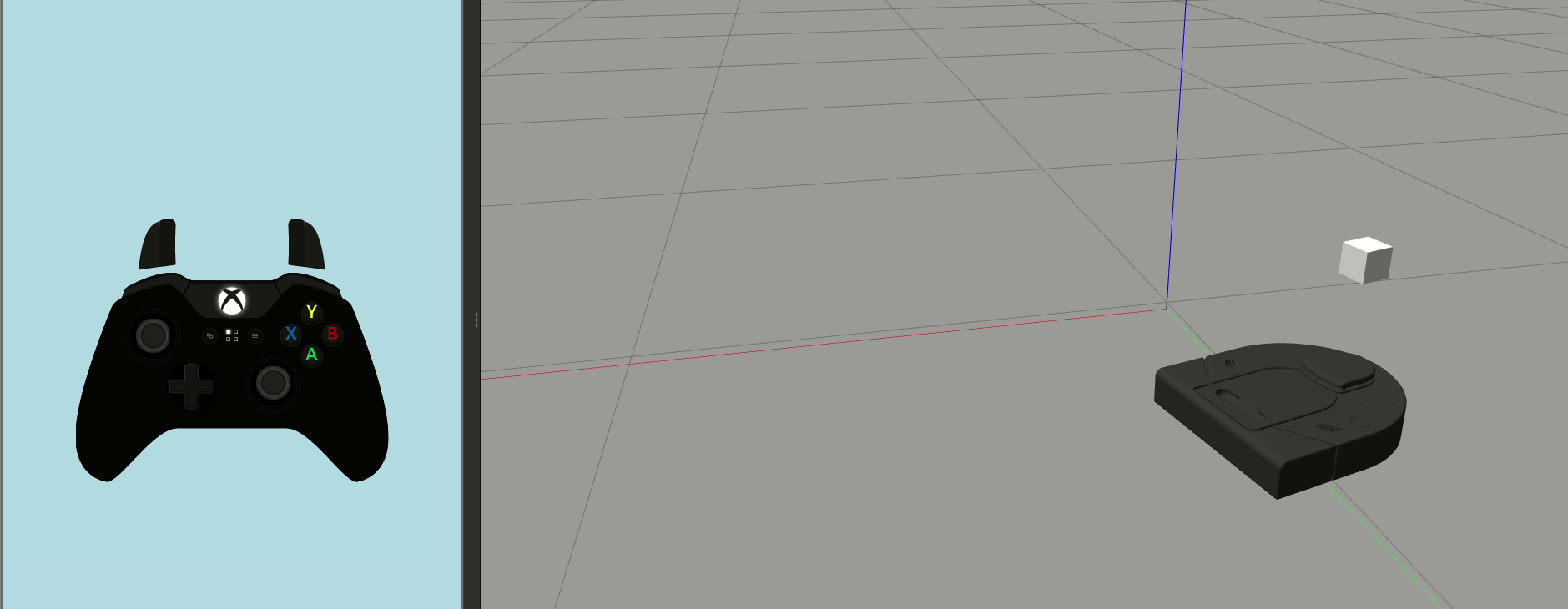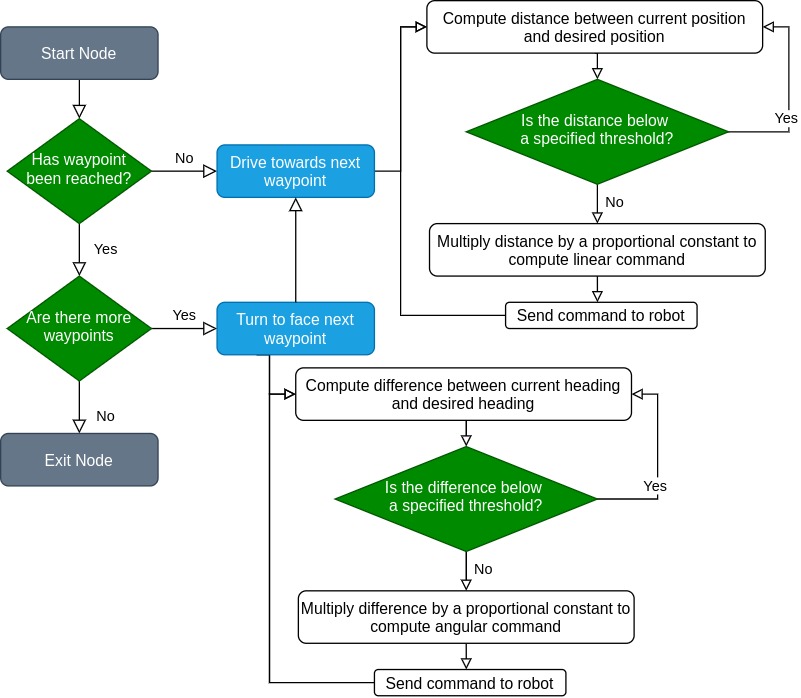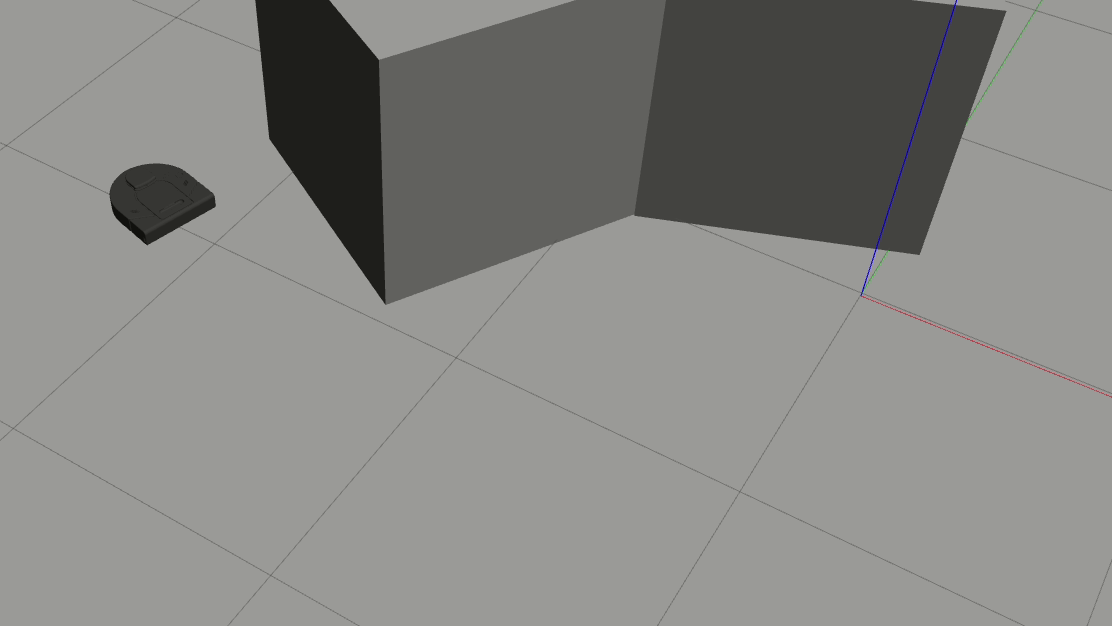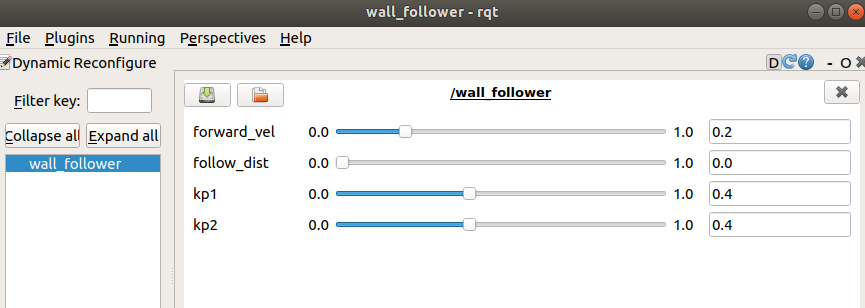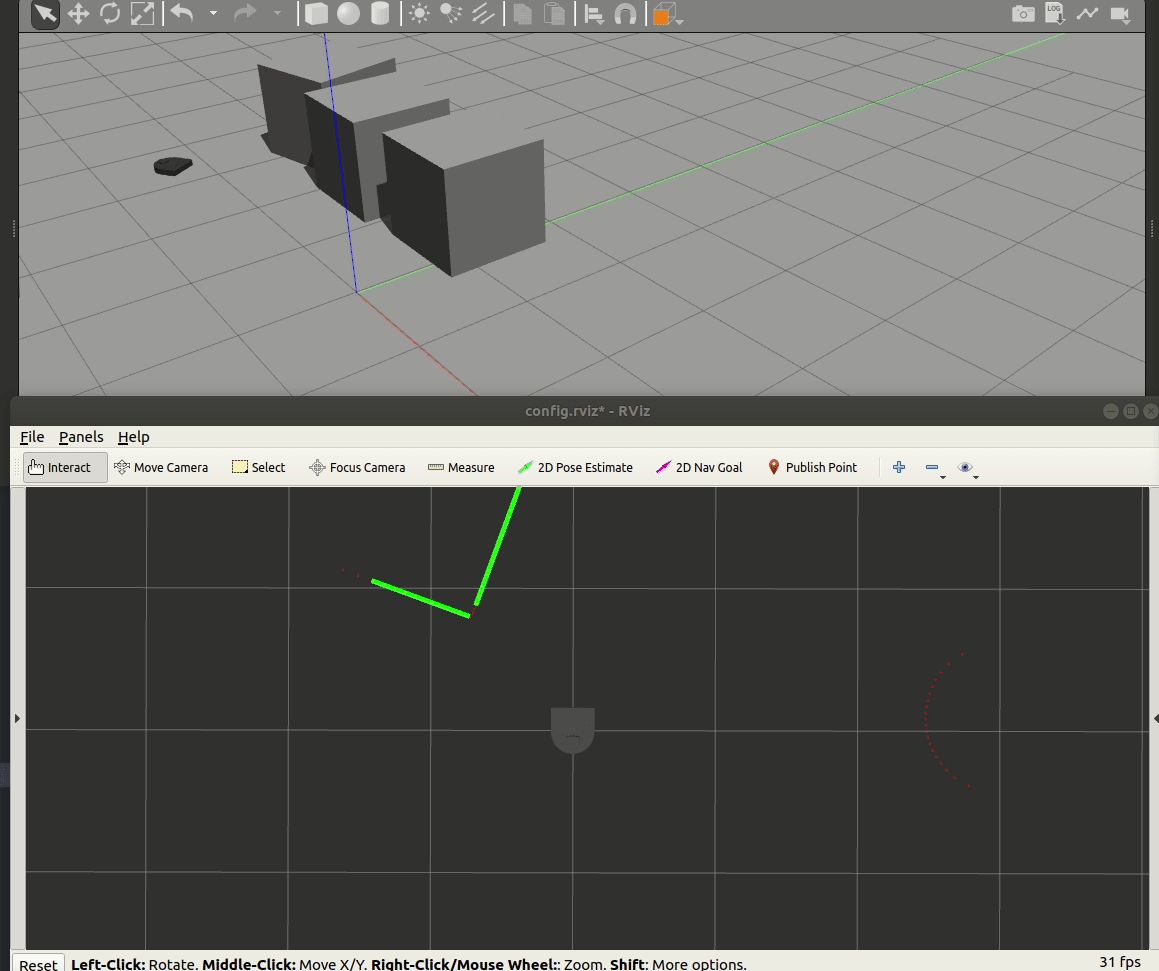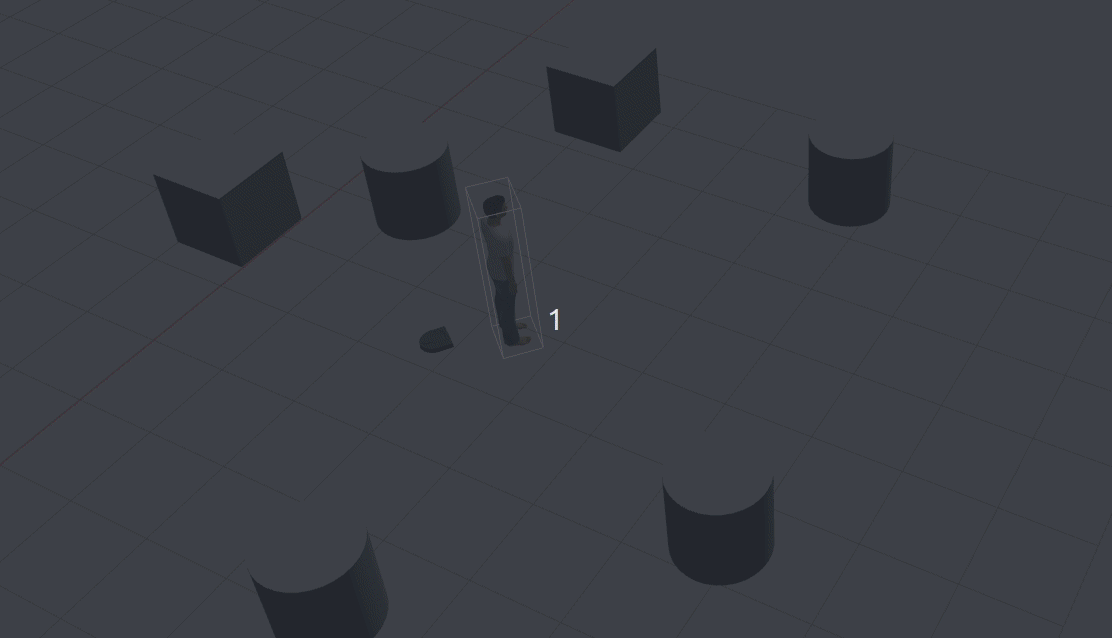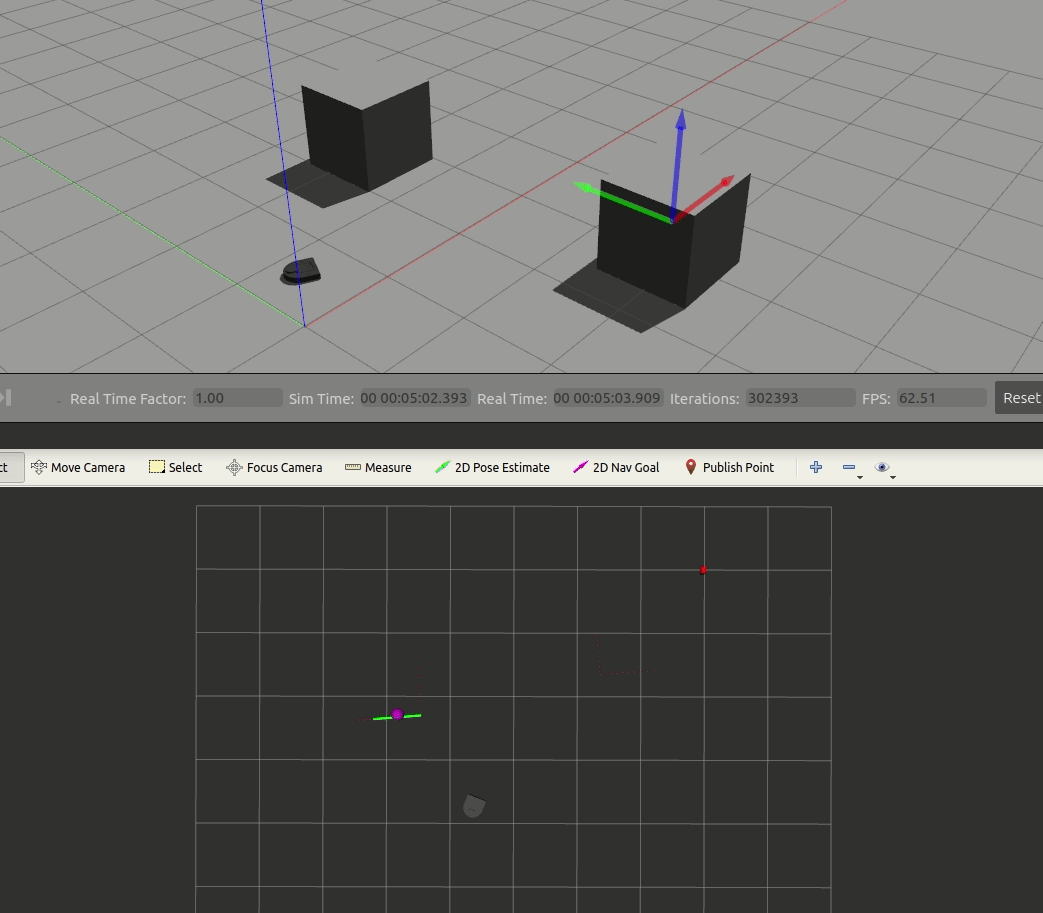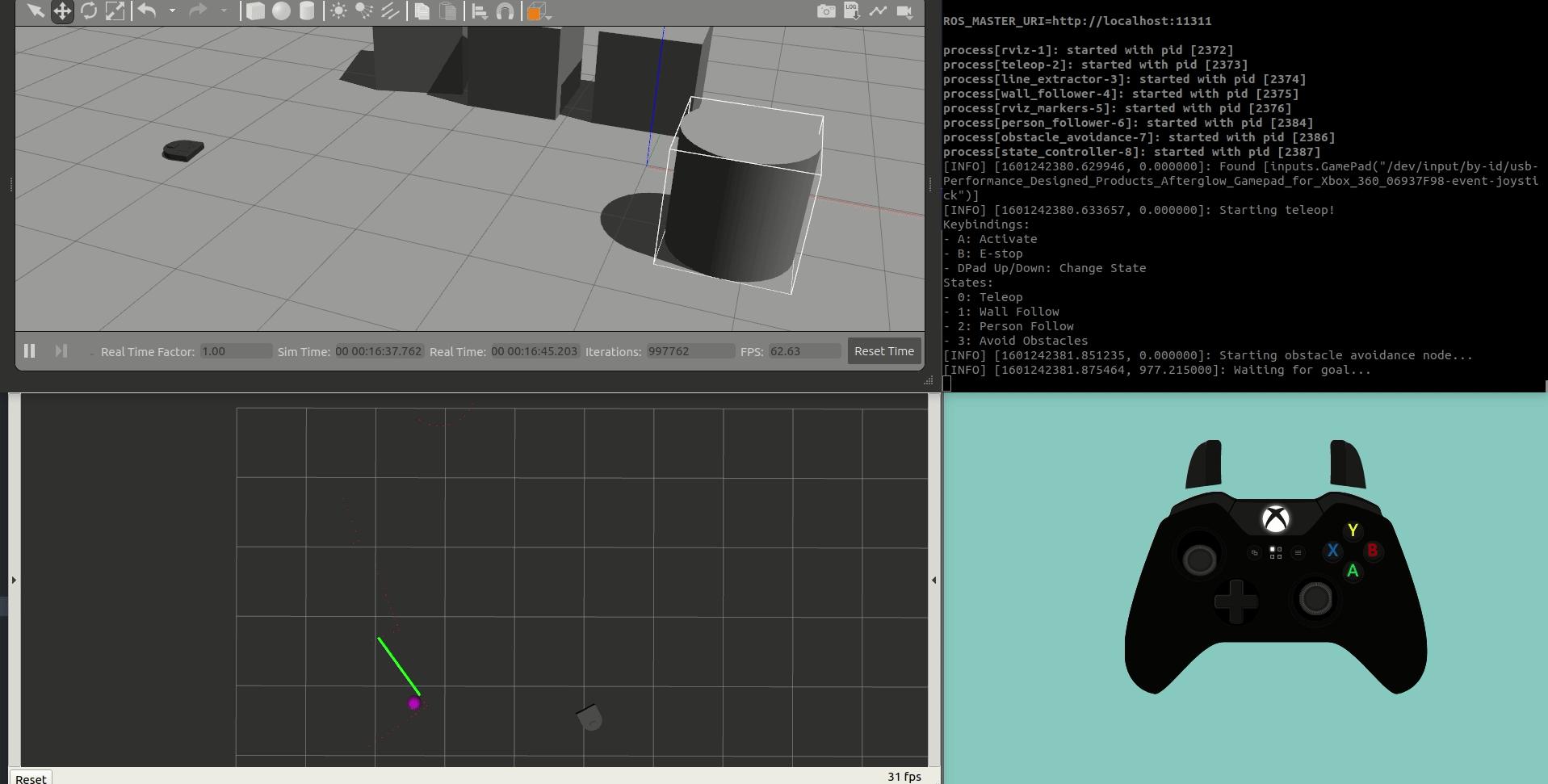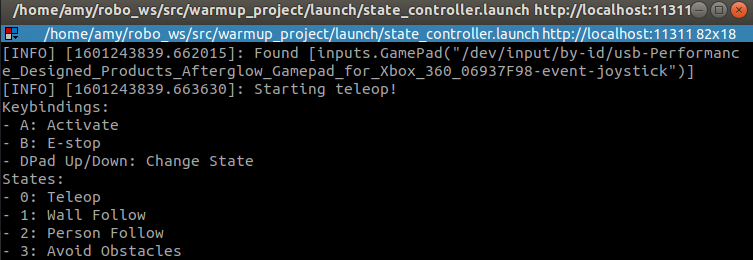Warmup Project
A Computational Introduction to Robotics, Olin College of Engineering, FA2020 Amy Phung
This repository contains code for introductory projects and simple demo behavior nodes for a two-wheeled mobile robot. Some demo behaviors incude a joystick-based teleop, a waypoint navigation node, a lidar-based wall follower, a person follower, and an obstacle detection and avoidance node. The state controller ties all of these components together and allows for seamless behavior switching.
Dependencies
- https://github.com/kam3k/laser_line_extraction
- python inputs package
- https://github.com/eric-wieser/ros_numpy
Robot Teleop
For the robot teleop, I used the inputs python package to read input from a joystick. Every button press and axis movement triggered an "event," which was regularly checked for in the node's main loop.
At first, an issue I ran into was the input appeared to be significantly delayed - when pressing a button, I wouldn't notice a change in values until seconds after I had pressed it. This was solved by increasing the node's update rate so that it "flushed out" the queue of detected events and provided the most up-to-date data at any given time.
With more time, this teleop could be improved with the incorporation of different types of scaling (linear, logarithmic), and by implementing a threshold for minimum difference between commands before sending a new command (right now it publishes commands at a very high rate, which would be suboptimal if limiting bandwidth was a consideration)
Square Driver
For the square driver, I wrote a generalized waypoint navigation node that drives the robot to a list of points. When a robot reaches a waypoint, it turns to face the next waypoint before driving towards it. The process can be described with the following flow chart
To get the current position and orientation of the robot, I used the odometry message on /odom. The current heading was computed by taking the cosine of the dot product between the two vectors. Since the "direction" of the difference was important, I used the sign of the vectors' cross product for the final computation.
Wall Follower
Usage
roslaunch warmup_project wall_follower.launch
My wall follower used the laser_line_extraction package to detect line segments in the lidar scans, which I then used to base my wall follower off of. The wall follower node computes the distance to the nearest detected line segment, then computes the heading difference between the robot and the segment. It then uses this difference as an input to a proportional control loop to adjust its heading, with the forward velocity command remaining constant. The constant was tuned using with ROS's dynamic reconfigure server.
Although there are tunable parameters for both the follow distance and kp2, neither of these parameters are used in the current implementation. With more time, these parameters could be used to help the neato follow the wall from a specified distance.
Another improvement that could be made is with the handling of corners. The current implementation does technically navigate around corners, but since it "locks onto" the nearest line segment the response to new walls is significantly delayed. This could be fixed by giving a higher priority to walls that are in front of the neato instead of basing the chosen wall purely by distance.
Person Follower
Usage
rosrun warmup_project person_follower.launch
My person follower implementation works by clustering the lidar points, then driving towards the center of the nearest cluster. First, the lidar data is converted to a pointcloud using the laser_geometry package, then is clustered using the DBSCAN implementation in scipy. Once a list of clusters are computed, the distance between the robot and the center of each cluster is computed to find the closest object to follow, which it assumes is the person. A proportional control loop is used to control linear and angular velocity when approaching the target.
Originally, I attempted to use the convex hull to compute the area of detected clusters to more rigorously distinguish between people and objects, but the implementation was ultimately more brittle than the current implementation due to "lidar shadows." When objects in front of the lidar obscured parts of the scan, large objects far away appeared to be 2 or 3 smaller "leg-sized" objects which threw off this implementation. With more time, the current implementation can be improved by specifically detecting two small clusters (which is what humans look like to robot lidars) instead of generally following the nearest large object.
Obstacle Avoidance
Usage
roslaunch warmup_project obstacle_avoidance.launch
At a high level, my obstacle avoidance implementation works by computing the optimal heading to get to the goal position, then adding in an adjustment based on detected objects in the lidar scan. Ultimately, the angular commands are computed in this line of code:
cmd.angular.z = self.k1*heading_offset + self.k2*obstacle_factor
To compute the heading offset, I took the difference between the neato's current heading according to odom and the angle of the vector between the neato's current position and the goal position in the odom frame.
To take into account the obstacles, I computed an "obstacle factor," which considered points within +/- 60 degrees of straight ahead. Since the lidar frame was rotated 180 degrees off of the robot frame, I first adjusted the ranges to make the frames point in the same orientation. For the points within this range, I took the sum of points weighted by both their angular position relative to the robot and distance from the robot. Points that were closer to the robot and were at smaller angles from dead ahead were given a larger weight than points further away and off to the sides. The pseudocode for computing this factor can be written as:
obstacle_factor = 0
for each point between -60 and 60 degrees:
angle = angle of point w.r.t neato
distance = distance of point from neato
obstacle_factor += (1/distance) * 3*(1/angle)
(Note: The 3 in the code above is used to make the magnitude of the angle approximately equal to the distance so they have a similar effect on the factor value)
The constants k1 and k2 were then manually adjusted until the robot prioritized the goal enough to make it there without hitting any obstacles. When k1 was too high, the robot would hit obstacles en route to the goal. When k2 was too high, the robot would ignore the goal and just run away from obstacles.
To help smooth the movements out, the forward velocity command was proportional to the distance from the goal, with a hard limit applied to prevent excessively large or negative values.
This current implementation doesn't work particularly well if there's an obstacle dead ahead with the goal right behind it since it doesn't know whether it should turn left or right. As long as one side has a bit more weight than the other side, it works alright since the weights "snowball" as the robot turns (i.e. positive feedback loop).
Dynamic Window Approach
Before this implementation, I spent a lot of time looking into the path planning algorithm proposed by this paper https://github.com/goktug97/DynamicWindowApproach. This implementation works by "predicting" where the robot will be at a specified time step assuming different commands are sent, then computing various "costs" for each of the predicted positions. It attempts to minimize the distance to the goal, while maximizing speed without hitting obstacles). Whichever command that leads to the lowest predicted cost is then chosen for the robot.
In putting this implementation together, I struggled with keeping track of what frame the different measurements were in and converting back and forth between the frames as necessary. Ultimately, I ran out of time, but would be interested in revisiting this implementation at a later point. The unfinished code for this can be viewed in obstacle_avoidance_dwa.
State Controller
Usage
roslaunch warmup_project state_controller.launch
For the state controller, I modified my teleop code to switch between the different behaviors. In order for the state controller code to know when to switch, I needed to modify the teleop code to publish the states of the relevant buttons. This required creating a new custom message type, which I called JoystickInput (note: the Joy ROS package does do something similar, but I wanted something more custom).
JoystickInput.msg
# Data for button presses on joystick. Reads True if button is pressed,
# False otherwise
# Button A state
bool a
# Button B state
bool b
# D-pad state
bool dpad_up
bool dpad_down
Since these controls are less intuitive than simply using the left joystick to drive the robot around, I added instructions to the teleop that prints on when the node starts up.
Instead of starting up all of the individual behaviors separately (i.e. teleop, wall following, etc.) I started all of them in the state_controller.launch launch file. However, since all of the nodes are attempting to publish to /cmd_vel, all of the topics needed to be remapped, which is also handled in the launch file. Looking back, I realize I've been fairly sloppy with my handling of namespaces - in some places, I use global topic names, and in others I properly use namespaces. While it works for the time being, this would be suboptimal in a larger project, and it's definitely something I'll be more cognizant of going forward.
This implementation could be improved by having a more elegant solution for adding & modifying states. With more time, I'd be interested in finding a way to use a configurable YAML file to define states instead of hardcoding them into the state controller code. It'd also be interested to look into using the bump sensor as an e-stop, regardless of what state the robot was currently in.
For a more extended demo of the full system, check out this video here: https://youtu.be/hElzsvBRAto
Final Remarks
For each behavior, I wrote a separate node that has its own class and script. Each node had a run() function, which handled all of the computing that needed to take place during each iteration and contained the main while not rospy.is_shutdown() loop. Callback functions were kept as brief as possible, typically only updating class attributes with new messages to prevent delays since these callbacks were called much more frequently than the main loop. ROS parameters were also used to allow for external adjustment by launch files as necessary.
The biggest takeaways from this project for me were in learning how to use the dynamic reconfigure server, realizing that using global namespaces everywhere isn't a good idea, and adding headers to messages is a good idea. While the dynamic reconfigure server did take a bit of time to set up, it was handy to be able to adjust parameters live instead of needing to re-run launch scripts over and over again, especially since some nodes took a bit of time to start up. The global namespaces became an issue when I went to implement the state controller - since I had used global namespaces in all of my nodes, I couldn't just apply a namespace to the nodes in the launch file to distinguish between the different /cmd_vel topics and needed to resort to something a bit more janky (making groups for each node then remapping it manually). For a lot of intermediate topics I created, I made headerless messages, which made it difficult to keep track what frame the points they measured were in and led to some difficult-to-debug errors. This ended up being a major time sink when trying to implement the dynamic window approach for the obstacle avoidance that could've been avoided. Although tedious to fix in this project, these takeaways are definitely things I'll consider when writing code for the upcoming projects.
